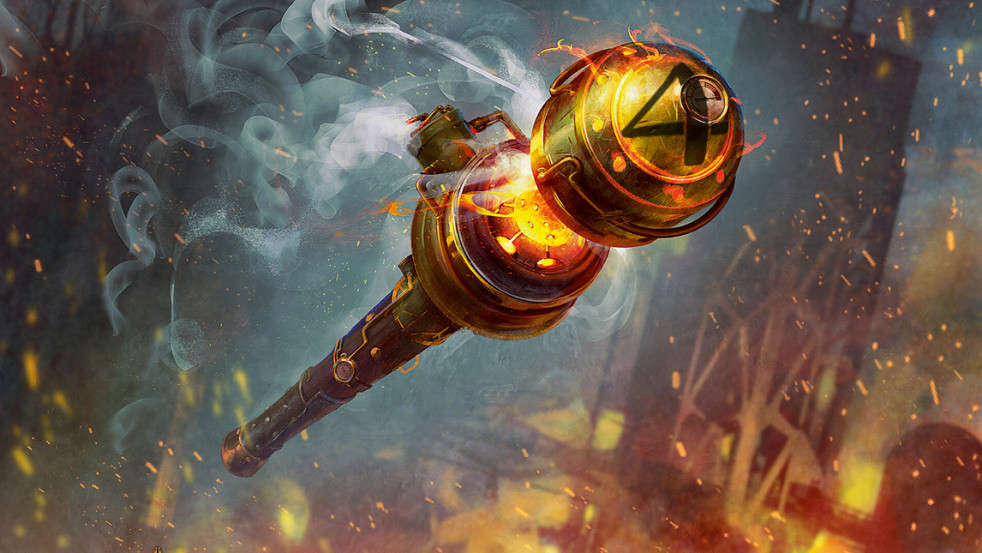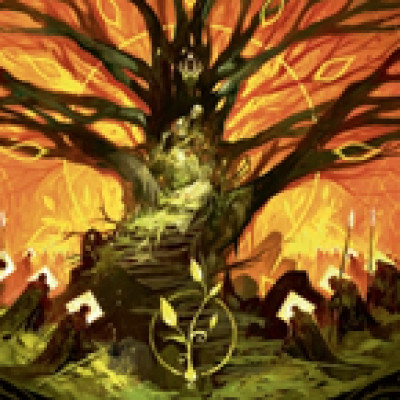Numbers have meaning in Flesh and Blood. 6s have been termed as 'poppers' since Illusionist made its debut in Monarch. 1s often disguise their true potential in Nuu, or threaten to wear you down when printed on Kodachi or a board full of allies/auras. The value of a card is 3 - math driven home when first learning how to respond to Dorinthea. And as a result, 4 is the breakpoint number. When your attack comes in for 4, it requires more than a stardard card in value to block it. A card that defends for 4 is a staple consideration for any deck, and a card that attacks for 4 - specifically, when that card returns your action point via go again - is the hallmark of the go-wide aggro archetype.


Aggro decks - short for aggressive, of course - refer to decks that have primarily foregone blocking in favor of pushing damage as quickly as possible. And among aggro decks, those that go wide - with 4+ attacks along the combat chain - hold a premiere position. Dylan Davis labeled this archetype "The Rushdown" in his Fighting Game Theory framework - a label that viscerally describes the strategy of playing lots of attacks to overwhelm the limitation of an opponent's hand size.
Doubtless, you're familiar with the concept.
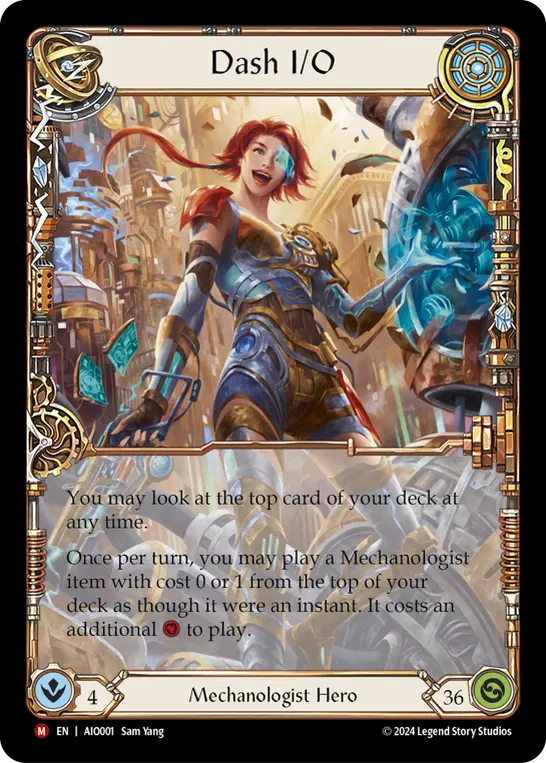

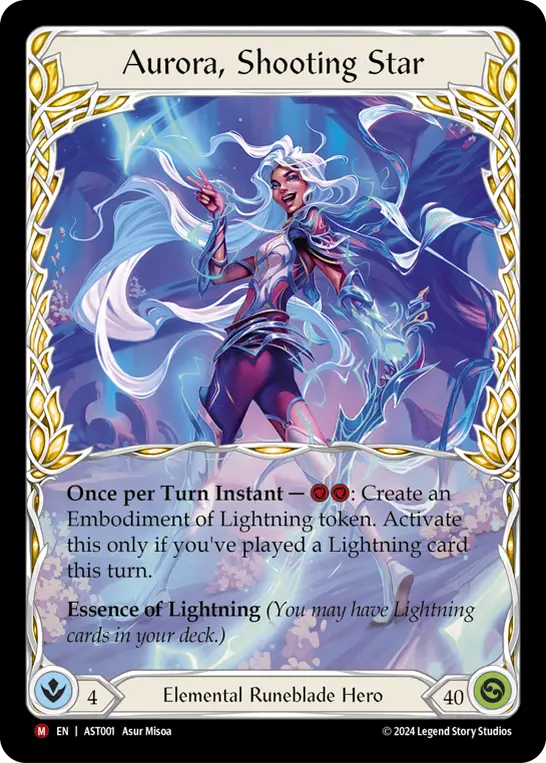

The '0-cost, 4-damage, go again' formula has proved itself time and time again, and has become a perennial archetype that LSS consistently offers to the playerbase. Of the 36 heroes currently available in Classic Constructed, 9 (25%) could claim this as their preeminent strategy - and another 5 could easily adopt it. Wide aggro decks consistently find their way to Top 8s at major events, and often have the highest representation among entries. Sink Below, Fate Foreseen, and even Shelter from the Storm have built their reputation entirely upon the ease with which they block these breakpoint attacks.


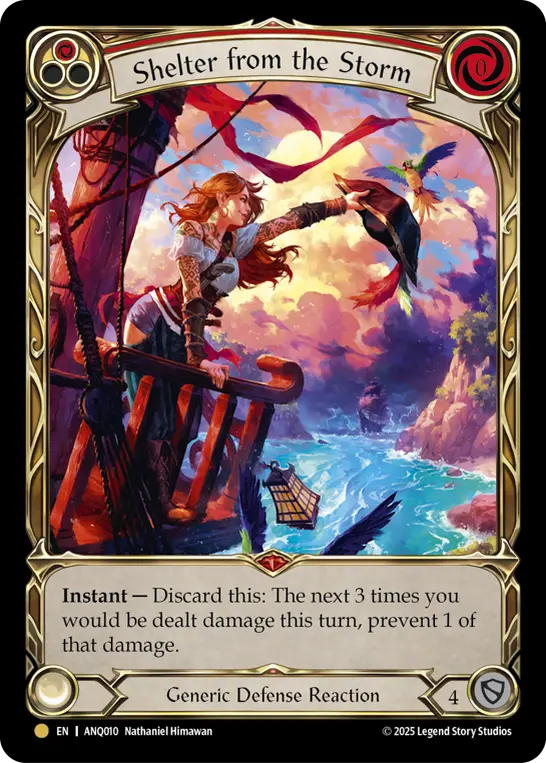
Aggro, as a concept, is a staple of TCGs, and merits consistent inclusion as an archetype in FAB. It speaks to a certain type of player and their natural strategic inclinations. But it's a valid question to ask whether wide aggro decks are overrepresented in the modern era, and whether anything can or should be done about that.
Delicate Math
Flesh and Blood lives and dies by carefully managing its economy of numbers - and the smaller the numbers are, the greater the care that must go into that. The math underlying the corners of a FAB card is well established at this point, and it relates to attacks like this:
Power + Block + Pitch Value + (effects) - Cost = 8
Generally, you'll find this applied to go again attacks as such:
Power (3) + Block (2) + Pitch Value (1) + (effect: go again = 2) - Cost (0) = 8
That's a Head Jab, the simplest version of this card and thus a ubiquitous term for discussing them.

A red Head Jab for 3 allows for the existence of a blue Head Jab for 1, which essentially sets up the entire framework that the game is built upon. But a combat chain consisting of 4 Head Jabs for 3 each would hardly make for a competent wide aggro strategy - LSS had to include ways to overcome a block-out defensive posture to a standstill. We needed a 0-for-4.
Power (4) + Block (2) + Pitch Value (1) + (effect: go again = 2) - Cost (0) = 9?
The math doesn't work. Something has to give. And so, we pick up the conditional go again - a tool that has come to define essentially every wide aggro hero the game has ever produced.
- Draconic heroes: If you've played a red/If this card is Draconic/If you've created a Fealty
- Ninja heroes: If ____ was the last attack/If this hits
- Mechanologist heroes: If an item has been destroyed/If you banished a Mechanologist card (Boost)
- Assassin heroes: If you've hit with a dagger
- Ranger heroes: If this has an aim counter
- Elemental heroes: If this card is fused/If you've played a Lightning/If you've played an Instant/If you've dealt damage
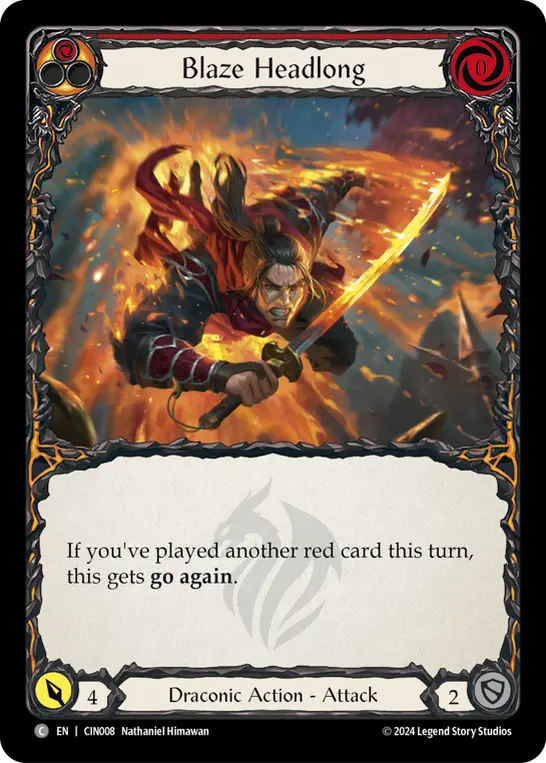

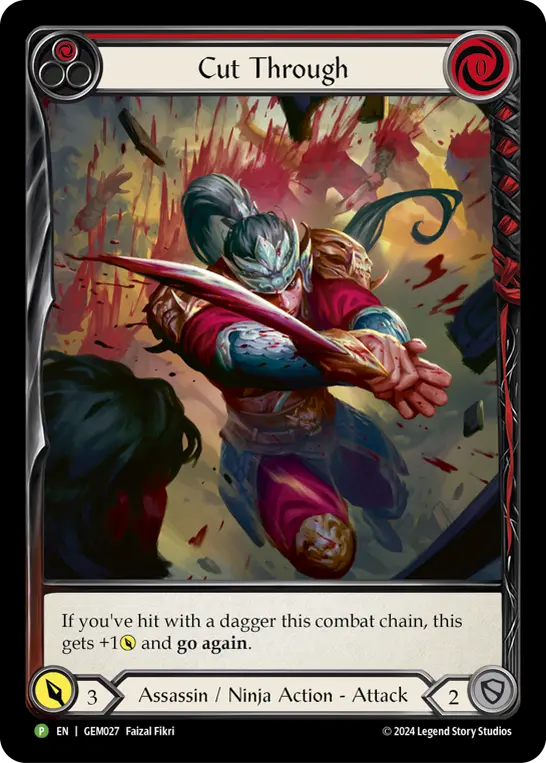
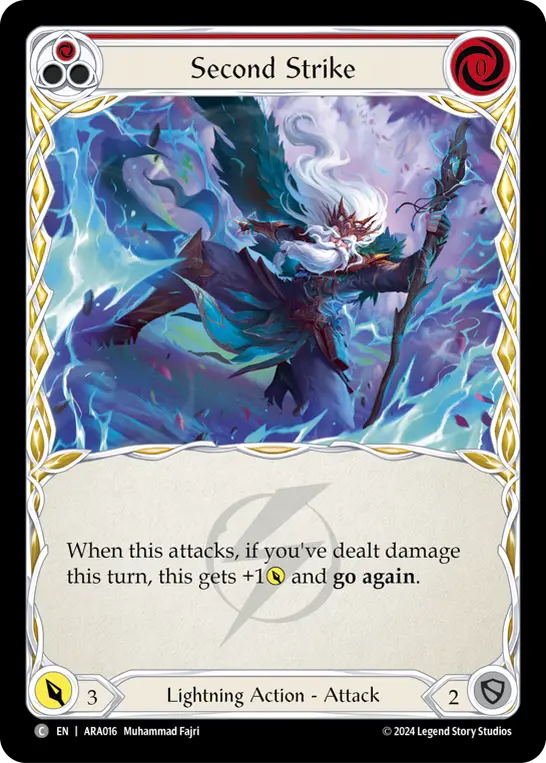
There are even heroes who provide go again to 0-for-4s that otherwise wouldn't have it. Arakni, Marionette and Aurora, Shooting Star are the primary examples in the current Classic Constructed environment, but it's also a feature of Ser Boltyn, Breaker of Dawn and, by cranking items at instant speed, Dash I/O. While each has conditions that must be met to accomplish this, their decks are of course built to facilitate the meeting of those conditions.
The thing is, while each deck goes about it differently, the end result is largely the same: a wide chain of 4s that can't possibly be fully blocked out. Damage pushed - and damage leaked - in one-for-one exchanges of cards between the two players. This is how wide aggro gets it done, with very few exceptions.
Note: Many wide aggro decks supplement their 4s with 1s - provided by weapons, arcane damage, or other recurring effects - that contribute further to this 'death by a thousand cuts'. These are essentially the same value proposition: 1 damage and an equal exchange of cards (in this case, 0).
The simplest proposition of a wide aggro deck is this: if I play 40 attack cards for 4, and you block with 40 cards for 3, I win. If I can deliver those 40 attacks in 10 turns, you won't have had an opportunity to play an attack of your own. And if I can get there any faster, all the better. No text needed (well, except for go again), just simple math.
Swing that pendulum over to the other end: the basic 3-for-7. In this case, the deck wants to use 2 cards for blocking (6 value), pitch a 3rd card (blue), and throw the 4th (for 7). While the 0-for-4s netted 16 value for a 4-card hand, the 'big and blocky' approach only grabs 13 (though, in theory, that 4th card remains in the deck to go longer in the late game). In a face-off between the two of them, the aggro player would deal 10 damage while the 'balanced' player would deal 7.
This is, of course, oversimplified. We allowed the aggro player to build their deck with an optimized subset of the base 0-for-4: namely, cards that gave go again conditionally, to allow them to play everything in one turn. We didn't give any optimization tool to the 'balanced' hero, and assuredly they exist. But at present, a Draconic Ninja could run 36 go again attacks that deal 4 (either by themselves, by throwing a knife for 1, or by granting a +1 to the next attack).
Balancing Inevitability
Before we go any deeper, I should qualify that what follows is my opinion on the question, "Is wide aggro out of balance with other core strategies?" But that premise is one you should stop and consider your own position on. I'm encouraged to see that, even if wide aggro is a vastly popular archetype, it isn't unchecked. At the end of the most recent Road to Nationals season, wide aggro heroes took 178 of 446 events, or about 40% of the events. This means 60% of the time, a wide aggro deck didn't win - and that points to decent balance.
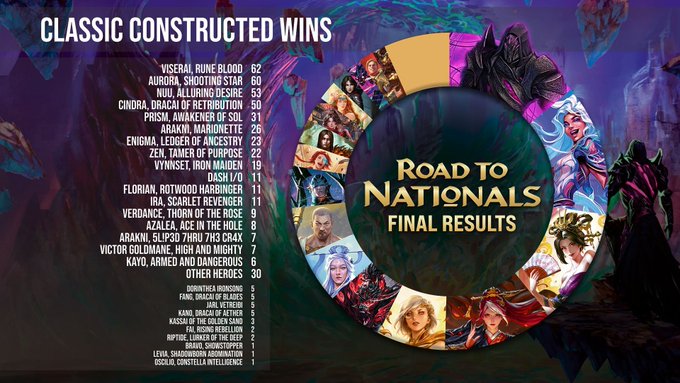
But I think there's more to the story than, "Is it balanced?" Instead, I think the question needs to be, "Is it interesting?" And on that front, I have a few concerns that wide aggro is more prescriptive than the ideal back-and-forth FAB is capable of.
- Narrow space for innovation. Essentially, to be a wide aggro hero, you have to have a significant number of breakpoint attacks, and you need to have go again. It's possible to accomplish this via means other than 0-for-4s with go again, but by and large that's how these heroes do it. While the share of Aurora, Cindra, Arakni, Dash I/O, Fai, and to a lesser extent Zen and Boltyn is, individually, rather reasonable, collectively they represent a vast number of matchups with the familiar play pattern of 'no blocks' into '4 with go again'. Aurora's accomplishing that with a Lightning Fusion and Fai's accomplishing that by leading with a red and Dash is accomplishing that with a boost, but to the opponent it's simply '4 into 4 into 4' and there's not a whole lot being done to vary that experience.
- Decision-making is done at deckbuilding. To run wide aggro, most heroes have to forego effective blocking. There's an obvious value loss when they use one of their attacks to block. I've often argued in favor of the 3-block on Enlightened Strike or Command and Conquer simply because it does present a real consideration for how best to use the card; a 2-block on a 0-for-4 with go again, however, is seldom better blocking. For this reason, most turn cycles are fairly predetermined; it is the task of the opponent to compel a wide aggro hero to even consider blocking.
- They will hit. And it's here that I feel the greatest consideration should be given as design continues to move the game forward. The idea of a wide aggro deck is that they push the chain wider than any hand could defend, ensuring that damage - even if it's just 1 leaked here and there - is always dealt, every turn. Because a card that can deal 4 damage can also be used to block, but a card that can block for 4 can't also make an attack.
None of this is to take away from the skill on display when piloting one of these decks. Watch Carlos Eduardo Amaral Da Silva pilot Aurora into Enigma during the Calling: São Paulo final - a hero he'd lost to twice before in that very event - and you'll see how much decision-making remains even when your default posture is to race them to 0. Rather, I'm calling out the over-reliance on the tried-and-true wide aggro textbook. It's time to try something new.
New Math
It's time we reconsidered the sanctity of 4s.
Breakpoints are an essential part of this game, and for good reason. The careful construction of this game around 3s makes for dynamic gameplay and amplifies skill expression. Honestly, I don't want to see that change.
But in every TCG, there are exceptions to the rule. FAB is no different. We have defense reactions and blocks that can cover 4s. Turn-wide prevention on cards like Shelter from the Storm and the budget-friendly Calming Breeze can supplement your 3-blocks. We have cards like Security Script that can increase your blocking numbers by 1. On that front, galvanize is being revisited in High Seas, which gives Mechanologist a way to climb to 4 with several of its cards.

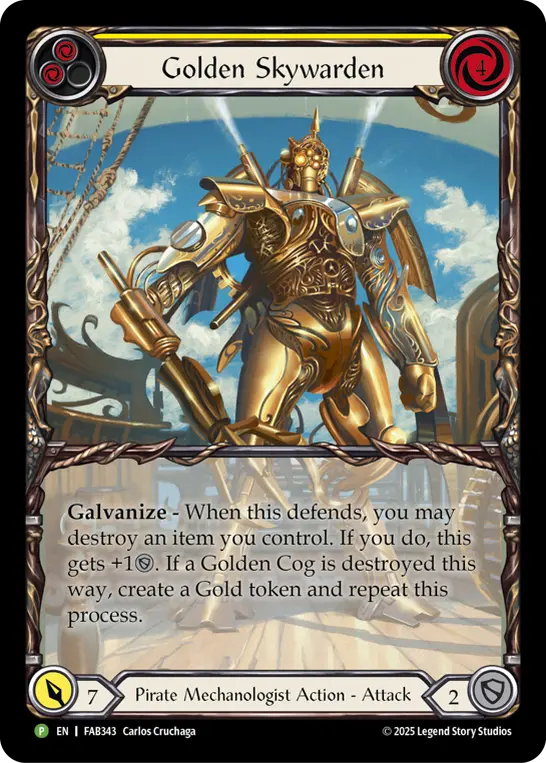
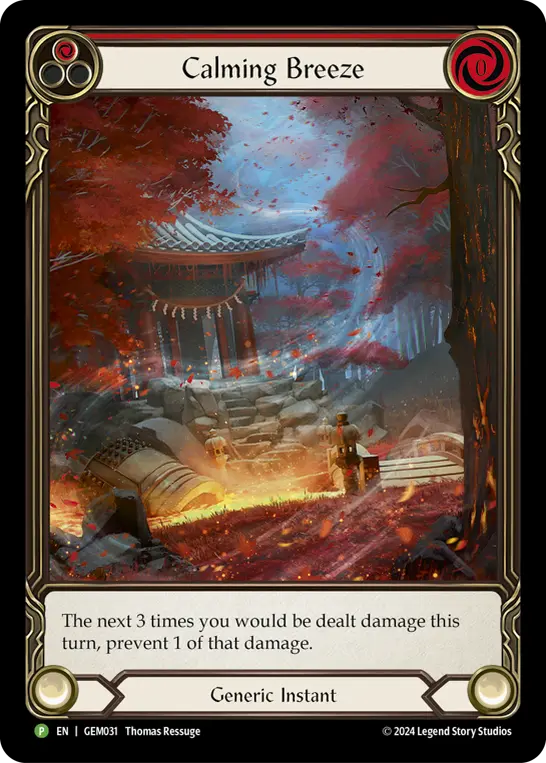
I'd love to see more of that. Shelter from the Storm is an excellent start, but its price makes it difficult for many to attain and its Majestic rarity limits you to 3 copies. Additional ways of blocking wide - the inverse of what Unmovable allows you to do in the face of tall dominated attacks - would be welcome.
Furthermore, it's time we offered more decks ways to interrupt the chain. This exists within the Ice cardpool - currently limited to the Guardian Jarl - in the form of Blizzard and Hypothermia; but it should be available in less potent form to other heroes. I'd love to see a generic block card with 6 cost that reads, "This costs 1 less to play for each attack on the combat chain. When this defends, the attack loses and can't gain go again." A hard stop that comes at a cost; an option, anyway, to stop the bleeding.


Finally, I hope to see greater exploration for the play patterns of wide aggro heroes. This already exists in heroes like Boltyn, Fang, Katsu, Slippy, and Maxx Nitro. These decks play with the numbers, the patterns, and the goals of any given turn; they allow for blocking as part of the plan, spend resources, and even assemble combos. But it's hard to say the designs are anywhere near as viable when compared to the straightforward 4s. There's good reason these heroes are passed over for others within their class.
As I look at the early hints of High Seas, I'm optimistic that we may receive a set without a wide aggro deck built around 4s. There appears to be an emphasis on blues and yellows, which seems to suggest decks that expect to pitch. Gold's role as a preeminent reward only reinforces this.
But beyond that, I hope this set adds to the growing number of answers to wide aggro decks. I'd like to see heroes like Aurora slow down in their headlong rush toward Living Legend - a disaster for a hero who just received an Armory Deck and continues to be postured as an entry point for new players. I have faith in LSS' ability to address long-term meta imbalances, as they've done many times before. And I hope that they see the same thing that I do: that breakpoint aggro decks are due for some bad news.

